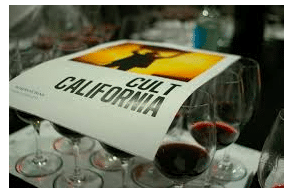Wine Searcher reports..
The price of Cult Cabernets has dropped below $15! Also, there’s a lawsuit!
These two moves in the Cult wine world are related. One company that makes a Cult wine is suing for declaratory judgment against a Napa winery that just won a trademark for its under-$15 Cult wine.
That’s why there’s a lawsuit.Meanwhile, at least two other companies that aren’t in the lawsuit are also making Cult wines. There are Cult wines all around us, if we just know where to look – on the label, for the word “Cult”.
The complaint, filed this week in federal district court in California, asks the court to declare that the Napa Valley winery Salvestrin‘s trademark of the word “Cult” for wine, received in June 2020, is invalid. It is a pre-emptive strike.
Appellation Trading Company, which filed the complaint, received a threatening letter from Salvestrin’s lawyer. The complaint says “the principal of ATC reached out to his counterpart at Salvestrin and confirmed that Salvestrin still intended to sue over ATC’s use of a ‘Cult’ brand name for wine.” So ATC sued first.
It’s amusing, of course, that any of these companies thinks they can trademark “Cult” as a wine name. But this is America, where people have big dreams, and just by finding the right trademark officer you can hope to corner the Cult wine market.
Most wine historians date the use of “cult wine” to small-production Napa Valley Cabernets in the late 1990s. Wine Spectator did a cover story on April 30, 2000 with the title “The Rise of California’s Cult Wines”. The article listed nine wineries including Harlan Estate, Screaming Eagle, Shafer Vineyards and Colgin. There were no sub-$15 Cabernets by Salvestrin on the list.
A bunch of cults
Who exactly fits in the “California Cult Wine” category has changed over the years, but none of those wineries released a bottle labeled “Cult Wine”.
The first company to do that was apparently Beau Vigne, owned by the Snider Family, which got label approval in 2010 from the federal Alcohol and Tobacco Tax and Trade Bureau (TTB) for a 2008 Napa Cabernet called “Cult”. Another wine company, Draxton Wines in Mendocino County, also got approval in 2010 for a “Cult” Russian River Valley Pinot Noir. Those two companies coexisted peacefully, blissfully atop the Cult wine world, even if consumers and Wine Spectator failed to take notice.
In July 2011, Salvestrin got label approval for a Napa Valley Cabernet called “Cult” and sent a cease-and-desist letter to Beau Vigne. But Beau Vigne continued to produce and sell Cult wine and Salvestrin did not sue.
https://www.wine-searcher.com/m/2021/06/wineries-clash-in-battle-of-the-cults




